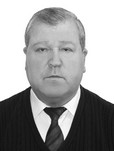Flexibility: basic biomechanics
Фотографии:
ˑ:
PhD, Professor A.A. Shalmanov1
PhD I.V. Tarkhanov1
1Russian State University of Physical Education, Sports, Youth and Tourism (SCOLIPE), Moscow
Flexibility is commonly understood as the utmost movement freedom with an optimal range. The article analyzes benefits of a new selection, training and physicality (including flexibility) testing model with a special emphasis on the movement biomechanics to realize the movement flexibility limitations in one or another joint and/or movement sequence on the whole. The study provides an insight to the flexibility factors including the joint surface shape; condition of the ligamentous apparatus; and the muscle movement biomechanics. It was found that flexibility normally and naturally grows in non-sporting individuals prior to the pubescence (11-14 years of age) period; followed by the movement range limitations in the period up to 28 years of age. Later on flexibility continues to fall and, therefore, great care is needed in different stretching exercises. Influences of the hereditary factors on flexibility were analyzed based on the twin genetics method. The study data and analysis give the grounds to conclude that that flexibility may be effectively trained by prudent training systems despite the fact that in the body growing ontogenetic stage it is largely dependent on the hereditary factors. Children’s selection for sport groups shall be governed, among other things, by the flexibility test data.
Keywords: flexibility, muscle model biomechanics, factors of influence.
References
- Vine A.A. Yavlenie peredachi mekhanicheskogo napryazheniya v skeletnoy myshtse [Phenomenon of transmission of mechanical stress in skeletal muscle]. Tartu, TSU publ., 1990. 34 p.
- Vine A.A. Yavlenie peredachi mekhanicheskogo napryazheniya v skeletnoy myshtse [Phenomenon of transmission of mechanical stress in skeletal muscle]. Doct. diss. (Hab.) abstract. M., 1993. 76 p.
- Dolenko F.L. Funktsionalnyie vozmozhnosti sustavnogo apparata pri dlitelnom spetsializirovannom uprazhnenii [Functionality of articular system under prolonged specialized exercise]. Teoriya i praktika fiz. kultury. 1967. no. 3. pp. 54-56.
- Zatsiorskiy V.M., Aruin A.S., Seluyanov V.N. Biomekhanika dvigatelnogo apparata cheloveka [Biomechanics of human motor system]. M.: Fizkultura i sport publ., 1981. 144 p.
- Zatsiorskiy V.M., Bulgakova N.Zh., Ragimov R.M. et al O geneticheskikh predposylkakh k razvitiyu gibkosti [Genetic prerequisites for development of flexibility]. Teoriya i praktika fiz. kultury. 1973. no. 7. pp. 54-56.
- Fidelyus K. Funktsii nekotorykh dvusustavnykh myshts bedra v sportivnykh uprazhneniyakh [Functions of some hip muscles in sports exercises] PhD diss. abstract. M., 1959. 13 p.
- Shalmanov Al.A., Grigorenko A.V., Shalmanov An.A. Metodika izmereniya elektromekhanicheskogo intervala skeletnoy myshtsy [Skeletal muscle electromechanical interval measuring technique]. SCOLIPE scientists works: Yearbook. M.: SCOLIPE publ., 1993. pp. 272-277.
- Shalmanov An.A., Sagitov R.M., Krylov A.V. Chetyrekhkomponentnaya mekhanicheskaya model myishtsyi [Four-component mechanical muscle model]. Modelirovanie sportivnoy deyatelnosti cheloveka v iskusstvenno sozdannoy srede (stendy, trenazhery, imitatory) [Modeling human sports activity in artificially created environment (stands, simulators)]. Proc. conf.. M.: FON publ., 1999. pp. 236-240.
- Hill A.V. The Heat of Shortening and Dynamic constants of Muscle. Proceedings of Royal Society. 1938. V. 126 В.pp. 136-195.
- Morrison J.B. Bioengeneering analysis of force actions transmitted by the knee joint. Bio. Med. Eng. 1968. V. 8. pp. 164-170.
- Morrison J.B. The function of the knee joint in various activities. Bio. Med. Eng. 1969. V. 2. pp. 573-580.



